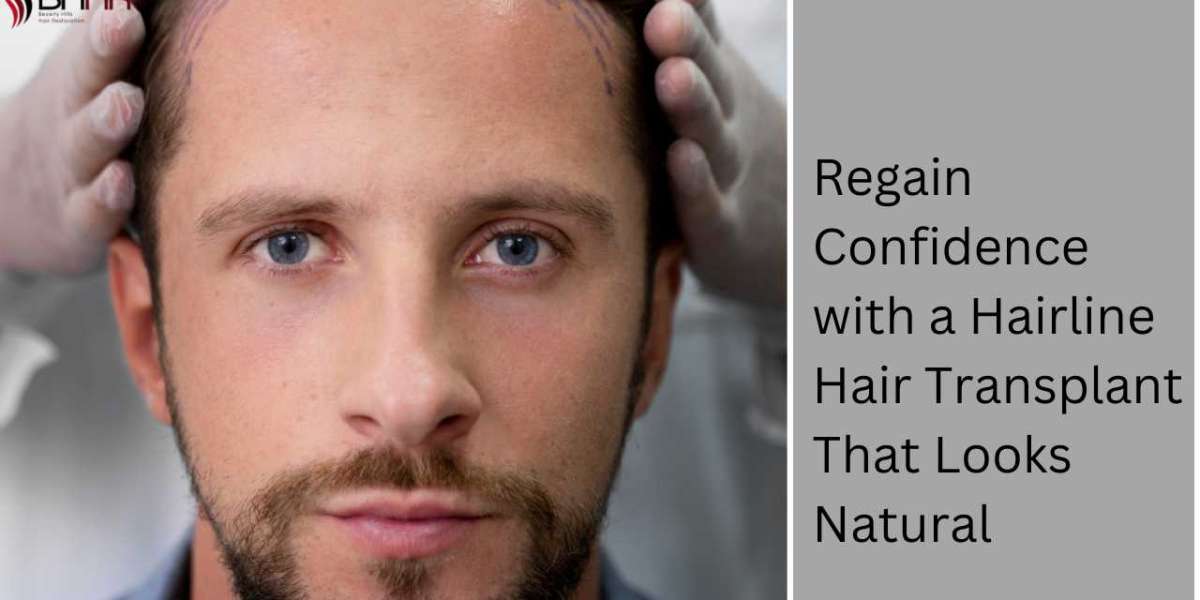A receding hairline is better than just a cosmetic concern—it often impacts how individuals see themselves and interact with the world. While hair loss is a natural part of ageing or genetics for many, its emotional toll is very real. For those seeking a lasting and natural-looking solution, a hairline hair transplant offers a proven method to restore both appearance and confidence.
Understanding the Hairline Transformation
A hairline hair transplant is a specialised procedure that focuses on reconstructing or refining the frontal hairline using your own hair. It’s not a full-scalp transplant but a targeted approach that involves strategic planning and precise execution. The result? A fuller, more balanced hairline that suits your natural facial structure. The importance of a well-designed hairline cannot be overstated. It frames the face, influences facial symmetry, and plays a major role in perceived age. When done correctly, a hairline restoration blends so seamlessly with your existing hair that it’s nearly impossible to detect.
Why Hairlines Recede
There are several reasons why people experience hairline thinning or recession. Genetics is one of the primary causes, especially in males who suffer from male pattern baldness. Hormonal changes, stress, and ageing are other contributing factors. In some cases, lifestyle habits or medical conditions can accelerate the process. Hairline loss doesn’t just affect men—many women also notice their hairline thinning or moving backwards. This change can impact their overall sense of femininity and youthfulness. That’s why a tailored treatment like a hairline-focused procedure can be life-changing for both genders.
Designing a Natural-Looking Hairline
Creating a natural-looking hairline is a true art—and it's one of the most important parts of a successful hair transplant. Surgeons don’t just randomly place hair; they carefully consider things like your age, face shape, ethnicity, and how your natural hair grows. The goal is to design a hairline that blends in so well, it looks like it’s always been there. Modern techniques like FUE (Follicular Unit Extraction) and FUT (Follicular Unit Transplantation) make this possible. With these methods, hair is taken from thicker areas—usually the back or sides of the head—and carefully placed along the front hairline, one follicle at a time. But it’s not just about how much hair is added—it’s how it’s done. The angle, spacing, and direction of each hair matter a lot. Skilled surgeons avoid creating a straight, obvious line. Instead, they build a soft, slightly uneven hairline that mimics the way hair naturally grows, especially in younger people. This attention to detail is what makes the final result look completely natural.
The Procedure: What to Expect
Before the procedure, patients undergo a detailed consultation where goals, scalp health, and donor area availability are assessed. On the day of surgery, local anesthesia is used, making the process painless. Hair follicles are harvested and then implanted with precision along the newly designed hairline. The session may take several hours depending on the number of grafts involved. Post-procedure care includes mild medications and instructions to ensure healthy healing. There is typically a short recovery period involving minor swelling or redness, which subsides within days. Most patients can return to work within a week.
Recovery and Growth Timeline
After the initial procedure, many of the transplanted hairs fall out within a few weeks—a natural part of the process called “shock loss.” This is temporary and expected. The real regrowth begins around the third month, with more noticeable improvement between 6 to 9 months. By the 12-month mark, most individuals enjoy the full results: a hairline that appears natural, youthful, and long-lasting.
Benefits of Restoring the Hairline
A well-executed hairline hair transplant goes beyond aesthetics. It can rebuild confidence, improve self-image, and eliminate the need for temporary cover-ups like hats, powders, or topical concealers. People often report feeling more socially comfortable and professionally confident after the procedure. Moreover, today’s advanced techniques leave minimal scarring and offer a high success rate. Unlike medications or topical treatments that require ongoing use, this is a one-time investment with permanent benefits.
Choosing the Right Specialist
Not all clinics are created equal. The success of your transformation largely depends on the surgeon’s skill and experience. When choosing a provider, review before-and-after galleries, patient testimonials, and credentials. A reputable clinic will take the time to customize the procedure based on your unique features rather than using a one-size-fits-all approach. Also, make sure the clinic uses up-to-date technology and offers transparency in both process and pricing. A good consultation should leave you feeling informed, not pressured.
Debunking Common Myths
There are many misconceptions about hairline procedures. Some believe the results will look fake or overly dense. Others worry it’s a painful or risky process. In truth, thanks to modern advancements and the expertise of trained professionals, the procedure is minimally invasive and highly customizable. Another myth is that it’s only for older individuals. In reality, people in their 20s and 30s with early signs of hairline thinning are also great candidates, especially if they’re looking to maintain a youthful appearance.
Conclusion
If you’re looking to restore your appearance and confidence, a hairline hair transplant offers a powerful, natural-looking solution. By working with a skilled specialist and following proper aftercare, you can achieve a hairline that not only looks great, but feels like it was never gone. This is more than a cosmetic fix—it’s a long-term investment in how you see yourself and how others see you. If you’ve been considering it, now is the time to take the first step toward transformation.








